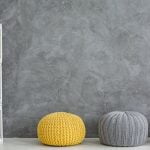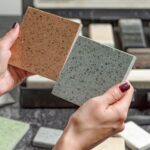Are you wondering how to buy for a retail home decor store? Understanding your target market is crucial for effectively purchasing inventory that will appeal to your customers. Identifying the customer demographic and preferences for home decor products is the first step in creating a successful buying strategy. By understanding what your customers want, you can curate collections that will enhance the store’s aesthetic and drive sales.
Trend forecasting is essential for staying ahead of the competition in the retail home decor industry. Researching and predicting upcoming home decor trends allows you to stock inventory that is in-demand and up-to-date. This section will provide tips and techniques for trend forecasting, ensuring that your store remains relevant and attractive to your target market.
Budgeting and financial planning are key components of buying for a retail home decor store. Effectively allocating funds to purchase inventory requires careful consideration of costs, margins, and sales projections. This section will offer strategies for budgeting and financial planning, helping you make informed decisions when acquiring inventory for your store.
Trend Forecasting
When it comes to running a retail home decor store, staying ahead of the competition requires a keen understanding of upcoming trends in the industry. Trend forecasting is a crucial aspect of buying for a home decor store, as it allows you to anticipate customer preferences and stock your store with products that are in-demand. By researching and predicting upcoming home decor trends, you can ensure that your store remains relevant and attractive to customers.
Researching Trends
To effectively forecast trends in the home decor industry, it’s essential to stay informed about current design movements, color palettes, materials, and styles that are gaining popularity. This involves regularly researching interior design blogs, attending trade shows, analyzing social media platforms such as Pinterest and Instagram for emerging trends, and keeping an eye on forecasts from industry experts.
By collecting this information, you can start to identify patterns and predict which trends are likely to resonate with your target market.
Anticipating Customer Preferences
Understanding your target market will also play a significant role in trend forecasting for your retail home decor store. By identifying the demographic of your typical customers and their preferences, you can tailor your product selection to meet their needs.
For example, if your customer base consists of young professionals who favor minimalistic interiors, you can anticipate trends such as Scandinavian-inspired decor or sustainable materials. Similarly, if your store caters to customers who appreciate traditional and ornate designs, you can predict trends in vintage or maximalist styles.
By actively engaging in trend forecasting through continuous research and anticipation of customer preferences, you can set yourself apart from competitors by stocking products that align with current and upcoming home decor trends.
Budgeting and Financial Planning
When it comes to buying for a retail home decor store, budgeting and financial planning are essential aspects of the process. The success of a retail business largely depends on how well funds are allocated to purchase inventory. Here are some strategies for effectively managing the financial aspect of buying for a home decor store:
1. Set a clear budget: Before making any purchasing decisions, it’s crucial to establish a realistic budget for your inventory. Consider expenses such as wholesale costs, shipping fees, and potential markups when determining how much you can allocate towards purchasing new products.
2. Prioritize high-demand items: Take the time to analyze sales data and customer feedback to identify which home decor products are top sellers. Allocating a significant portion of your budget towards replenishing these high-demand items can help maintain steady sales and customer satisfaction.
3. Research cost-effective suppliers: Sourcing suppliers that offer quality products at competitive prices is key to effectively allocating your budget. Look for vendors who provide bulk discounts or special promotions that can stretch your purchasing power further.
Remember that effective budgeting and financial planning ultimately involves striking a balance between investing in new, on-trend products and maintaining sufficient stock of reliable best-sellers. By carefully managing your funds, you can ensure that your retail home decor store offers a diverse range of products while staying within budget constraints.
For more tips on how to buy for a retail home decor store while maximizing your finances, consider seeking advice from experienced retail buyers or attending industry seminars and workshops focused on budgeting and financial planning.
Sourcing Suppliers
When it comes to running a successful retail home decor store, one of the most important aspects is sourcing high-quality and reliable suppliers for your products. Finding the right suppliers can have a huge impact on the success of your business, as the quality and variety of your inventory can make or break your store’s reputation. Here are some tips on how to buy for a retail home decor store:
- Do Your Research: Before diving into any supplier relationship, it’s essential to thoroughly research potential partners. Look for suppliers that offer high-quality products that align with the aesthetic and preferences of your target market.
- Diversify Your Suppliers: It’s important to have a diverse range of suppliers to ensure you have access to a wide variety of products. This also helps mitigate risks such as supply chain disruptions or changes in product availability.
Negotiating With Suppliers
Once you’ve identified potential suppliers for your retail home decor store, the next step is negotiating prices, terms, and contracts. Negotiating effectively can help you secure better deals and build strong, mutually beneficial relationships with your suppliers.
- Establish Clear Communication: Open and honest communication is key when negotiating with suppliers. Clearly outline your expectations and requirements while being open to understanding their constraints.
- Build Long-Term Relationships: Instead of focusing solely on getting the lowest price, aim to build long-term relationships with your suppliers. This can lead to better discounts, priority access to new products, and improved customer service.
By following these tips for sourcing suppliers and negotiating effectively, you can ensure that your retail home decor store has access to high-quality products that will appeal to your target market while also maintaining healthy profit margins.
Negotiating With Suppliers
When operating a retail home decor store, negotiating with suppliers is a crucial aspect of the business to ensure profitability and customer satisfaction. The ability to secure favorable prices, terms, and contracts with suppliers directly impacts the store’s bottom line and the quality of products offered to customers. Here are some practical tips for negotiating effectively with suppliers on how to buy for a retail home decor store:
Firstly, it is essential to conduct thorough research on potential suppliers and their offerings. Understanding the market value of home decor products and identifying competitive pricing benchmarks will provide leverage during negotiations. Additionally, building strong relationships with various suppliers can result in more flexible terms and better pricing.
Moreover, being prepared to negotiate not only on price but also on payment terms, delivery schedules, and minimum order quantities can lead to mutually beneficial agreements. The goal is to secure the best possible terms without compromising product quality or vendor reliability.
Lastly, maintaining open communication with suppliers and being transparent about your needs and expectations is crucial. Clearly outlining your requirements and actively listening to your supplier’s concerns can pave the way for a successful negotiation process.
| Negotiating Tips | Benefits |
|---|---|
| Conduct thorough research on potential suppliers | Gain leverage during negotiations |
| Negotiate on price, payment terms, delivery schedules, and minimum order quantities | Secure mutually beneficial agreements |
| Maintain open communication with suppliers | Pave the way for a successful negotiation process |
Inventory Management
Utilizing software or inventory management systems can streamline the process and provide real-time data on stock levels and popular items. Additionally, conducting regular physical inventories can help identify discrepancies between recorded and actual stock levels, enabling prompt corrective action.
Another key aspect of inventory management is keeping track of product turnover rates and identifying slow-moving items. By analyzing sales data, store owners can make informed decisions about reordering popular items and discounting or discontinuing slow sellers.
Furthermore, organizing the layout of the store to maximize visibility and accessibility of products can enhance the shopping experience for customers. Grouping similar items together and creating attractive displays can also encourage cross-selling and impulse purchases.
By implementing these best practices for managing inventory, retail home decor store owners can optimize their operations while meeting customer demand effectively.
| Inventory Management Practices | Benefits |
|---|---|
| Establishing an efficient tracking system | Accurate monitoring of stock levels and sales data |
| Analyzing product turnover rates | Informed decision-making for reordering or discounting items |
| Optimizing store layout and displays | Enhanced shopping experience for customers and increased sales potential |
Curating Collections
When it comes to running a retail home decor store, curating collections is crucial to the success of the business. This involves carefully selecting and displaying products that will appeal to your target market and enhance the overall aesthetic of the store. By paying attention to this aspect of your business, you can create an inviting and visually appealing shopping experience for your customers.
Understanding Your Target Market
Before you can begin curating collections for your home decor store, it’s essential to have a deep understanding of your target market. Consider factors such as demographics, lifestyle preferences, and purchasing behaviors. By knowing who your customers are and what they are looking for in home decor products, you can tailor your collections to meet their needs and desires.
Product Selection
When selecting products for your store, consider offering a mix of items that cater to different tastes and styles within your target market. This may include modern, minimalist pieces for one segment of your customer base, while another segment may prefer more traditional or eclectic options. Additionally, consider incorporating seasonal and trending items into your collections to keep them fresh and appealing to customers.
Visual Merchandising
The way you display products in your store can have a significant impact on sales. Utilize effective visual merchandising techniques such as creating themed displays, using strategic lighting, and arranging products in an aesthetically pleasing manner. This not only enhances the overall look of the store but also helps showcase the products in a way that attracts customer attention and encourages purchases.
By focusing on curating collections that align with the preferences of your target market while enhancing the aesthetics of your store through thoughtful product selection and visual merchandising, you can create an inviting shopping environment that keeps customers coming back for more.
Marketing and Merchandising
In conclusion, buying for a retail home decor store involves a multi-faceted approach that encompasses understanding the target market, trend forecasting, budgeting and financial planning, sourcing suppliers, negotiating with suppliers, inventory management, curating collections, and marketing and merchandising strategies. By taking the time to thoroughly understand the customer demographic and preferences for home decor products, retailers can make informed purchasing decisions that align with their target market’s needs and desires.
Furthermore, staying ahead of the competition by researching and predicting upcoming home decor trends is crucial for stocking inventory that reflects current tastes and preferences. Effective budgeting and financial planning are essential for ensuring that funds are allocated efficiently for purchasing inventory while also allowing room for potential growth in the future. This is relevant in learning how to buy for a retail home decor store.
Another critical aspect of buying for a retail home decor store involves finding high-quality and reliable suppliers, as well as honing negotiation skills to secure favorable prices, terms, and contracts. Additionally, implementing best practices for inventory management and curating collections that appeal to the target market will help create an attractive shopping experience.
Finally, successful marketing and merchandising strategies will promote sales both in-store and online through effective presentation techniques. By following these guidelines on how to buy for a retail home decor store can potentially lead to increased revenue and long-term success.
Frequently Asked Questions
Is a Home Decor Store Profitable?
A home decor store can be profitable if there is a strong demand for home decor in the local market, and if the store offers unique or high-quality products. It is also important to have a solid marketing strategy and good customer service.
How to Buy Merchandise for a Retail Store?
When buying merchandise for a retail store, it’s important to research current trends and consumer preferences. Building relationships with reliable suppliers is crucial, as is negotiating favorable terms to ensure a healthy profit margin.
How to Open Your Own Home Decor Store?
To open your own home decor store, start by creating a detailed business plan that outlines your target market, competition, pricing strategy, and financial projections. Secure funding, find a suitable location, and carefully curate your product selection to attract customers. Additionally, focus on creating an inviting atmosphere and providing excellent customer service to build a loyal customer base.

I’m thrilled to be your companion on this exciting journey through the world of home decor and design. With a passion for turning houses into homes and a keen eye for the finer details, I’m here to help you transform your living spaces into beautiful, functional, and meaningful havens.





